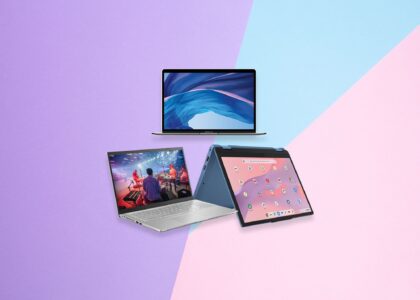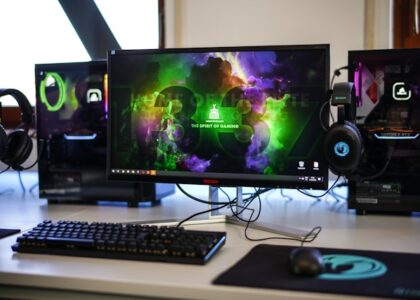In the era of digital transformation, where most professions are rapidly moving online, owning a powerful yet portable laptop has become a necessity. This is especially true for designers and programmers—those whose work directly depends on the performance of their hardware. Professionals in Portugal are increasingly choosing devices that combine high computing power, high-quality displays, and long battery life.
Portability is also important—not every day is spent in the office, as many prefer to create in Lisbon’s cafes or code from Porto’s co-working spaces. And sometimes, it’s essential to take a break with an online game or a light online distraction, including virtual Casinos e Apostas, to let the mind reset.
What to Consider When Choosing a Laptop for Professionals
Before diving into specific models, it’s worth understanding what exactly makes a laptop suitable for design or programming tasks. First of all, the processor. The higher its performance, the faster it can handle tasks like compiling code, rendering images, or processing video. Today, Intel Core i7, i9 and AMD Ryzen 7, 9 of the latest generations are considered optimal for these purposes.
Next is the graphics card. For graphic design, 3D work, animation, or visualization, laptops with discrete GPUs such as NVIDIA GeForce RTX or AMD Radeon, or professional graphics adapters like NVIDIA RTX A-series, are essential. For programmers not dealing with graphics or machine learning, integrated graphics are usually sufficient.
The display is equally important. Designers require IPS or OLED panels with wide color gamut (100% sRGB and above), high brightness, and resolution starting from Full HD or higher. Programmers, who spend hours in front of the screen, benefit from features like blue light reduction and matte displays to reduce eye strain.
RAM also plays a key role. At least 16 GB is recommended, ideally 32 GB—especially if you frequently run heavy IDEs, dozens of browser tabs, and virtualization systems simultaneously. The storage should be SSD, preferably 512 GB or more, to ensure smooth performance and quick file access.
Top Models of 2025 for Work and Creativity
MacBook Pro with M3 Pro and M3 Max Chip
Apple continues to dominate the design world, and the new MacBook Pro lineup with M3 Pro and M3 Max chips proves it. These laptops combine incredible performance with energy efficiency, allowing users to work with 3D graphics, 8K video, and demanding applications effortlessly. The 14- or 16-inch Liquid Retina XDR display provides exceptional color accuracy—crucial for image-focused work.
Another bonus is the long battery life and quiet operation, even under heavy loads. The macOS system also offers a rich ecosystem of professional tools—from Final Cut Pro to Xcode—making the MacBook Pro especially appealing for iOS and macOS developers.
Dell XPS 15 and 17
The Dell XPS remains one of the top choices for those looking for a versatile, premium Windows laptop. The XPS 15 and 17 feature InfinityEdge displays with 4K resolution and precise color reproduction, perfect for designers. Under the hood are Intel Core i7/i9 processors and NVIDIA RTX GPUs, making these devices suitable for both graphics work and complex development tasks.
Programmers appreciate the Dell XPS for its high-quality keyboard, large screen size, and solid build. Thanks to a powerful cooling system and a high-capacity battery, the laptop can handle long working sessions without overheating.
ASUS ROG Zephyrus G14
Originally built as a gaming laptop, the ASUS ROG Zephyrus G14 has become unexpectedly popular among designers and developers due to its balance of power and mobility. It comes with AMD Ryzen 9 processors and NVIDIA RTX 4060/4070 graphics, along with a high-quality 14-inch display with a high refresh rate and broad color coverage.
The relatively lightweight chassis, minimalist design without flashy gaming elements, and long battery life make the Zephyrus a great choice for those who need performance on the go.
Lenovo ThinkPad X1 Carbon Gen 12
For programmers who value reliability, keyboard quality, and minimalism, Lenovo’s ThinkPad series is a classic. The 2025 X1 Carbon edition has been upgraded with Intel Core Ultra processors and is now even thinner and lighter. It doesn’t feature a high-powered GPU, but for most developers, that’s not a necessity.
With a 2.8K resolution display, anti-glare coating, and eye protection technologies, it’s ideal for long hours of work. Its strong battery life and excellent data protection are also worth mentioning—particularly important for freelancers and startup developers in Portugal working with sensitive information.
Mobility Without Compromise
Today’s designers and developers are no longer tied to office desks. They might code from a terrace in Algarve, edit illustrations on the Lisbon–Porto train, or simply unwind with movies, music, or short sessions in online games. That’s why a laptop must be not just powerful but also lightweight, autonomous, and ready for any challenges outside the home.
Fortunately, manufacturers are increasingly designing devices to meet these demands. Lightweight magnesium-alloy bodies, batteries offering 15+ hours of usage, USB-C charging, and rapid performance mode switching have become standard in the best models. This allows professionals to enjoy mobility without sacrificing power.
Conclusion: How to Choose Your Ideal Laptop
Choosing the ideal laptop is a balance between performance, portability, and price. For designers, the screen and GPU are top priorities; for programmers, the keyboard, stability, and multitasking support matter most. It’s essential to define what tasks you tackle daily, where you usually work, and which applications you use. From there, it’s a matter of preference: a Mac for those in the Apple ecosystem, Dell or ASUS for versatile Windows use, Lenovo for those who value reliability and simplicity.
In 2025, professionals in Portugal have every opportunity to work effectively and comfortably anywhere in the country—with a laptop that matches their lifestyle and professional goals.






